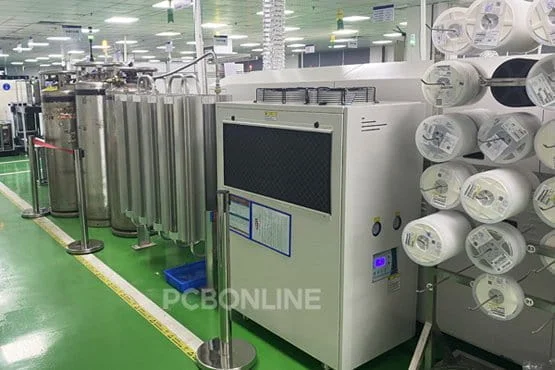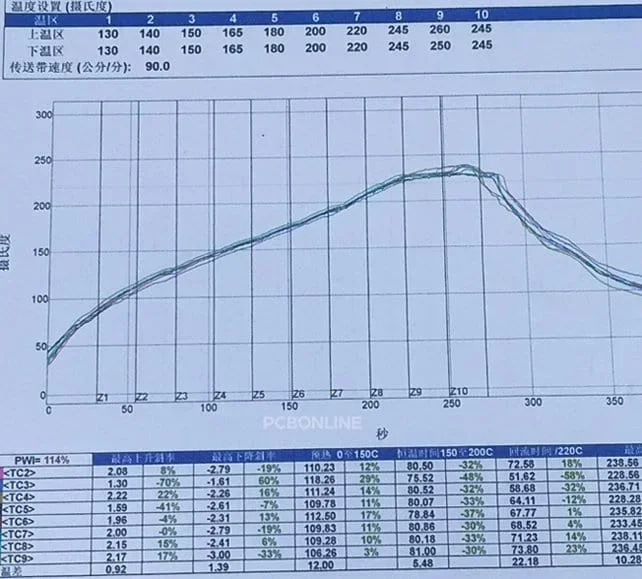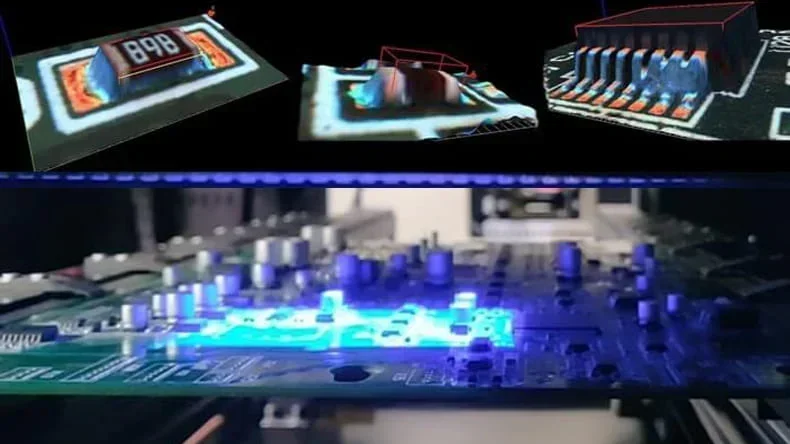If your project is for middle and high-end uses, such as automotive, medical, defense, and aerospace, you will want nitrogen reflow for printed circuit board assembly (PCBA). What are the benefits of nitrogen reflow soldering for electronics hardware manufacturing? And in what situations should you consider nitrogen reflow for PCB assembly? Read this comprehensive guide to nitrogen reflow soldering.
Part 1: What is Nitrogen Reflow Soldering

Reflow soldering is the process of preheating and warming up solder paste so that the solder flux activates and tin alloy powders melt. The solder flux boosts tin alloy wetting (liquid tin alloy to bond the PCB pads and surface-mount devices).
Then the solder flux evaporates away. When the reflow soldering temperature reaches the peak and stays there for about 40 seconds to 70 seconds, between the PCB pads, surface finish, and solder occurs a chemical reaction and forms an intermetallic compound (IMC).
Later the reflow temperature drops down. When the transfer track sends the PCBA out of the reflow oven, reflow soldering ends.

Nitrogen reflow means reflow soldering happens in pure nitrogen along the way in the reflow oven. Inside a nitrogen reflow oven, there is 99.99% nitrogen. The number of temperature zones of nitrogen reflow ovens ranges from 8 to 12. From PCBONLINE's PCB assembly factory, our oven has 8 zones.
According to the GB/T 10565-1989 standard in China, in nitrogen reflow soldering, the oxygen content in the reflow oven is 4% and below. If there's too much oxygen in a nitrogen reflow oven, it can impact the soldering quality and thermal conversion efficiency, and even lead to fire in the SMT manufacturing process.
Part 2: Benefits of Nitrogen Reflow Soldering
Nitrogen reflow develops from regular reflow which happens around the air. Compared with regular reflow soldering, nitrogen reflow soldering provides better wetting and prevents oxidation in the soldering process.
Nitrogen reflow soldering prevents oxidation during soldering. Nitrogen is an inert gas, and it doesn't oxidize metal. If the PCB pads and surface-mount devices' pins have no oxide before soldering, in the nitrogen reflow oven, they can be soldered without any influence from oxygen or impurities in the air.
Nitrogen reflow soldering provides better wetting for soldering. Good wetting leads to successful soldering. In the nitrogen reflow oven, the solder liquid tin alloy has good fluidity and can "climb" on SMD pins sufficiently, which is wetting. If there's oxide on the PCB pads or SMD pins or oxygen during reflow soldering, de-wetting and even non-wetting can happen. Without oxidation, there's no interface for soldering, and IMC can form smoothly.
Nitrogen reflow soldering reduces the possibility of insufficient soldering and solder voids. There's no oxidation of solder and PCB pads during reflow soldering, and solder wetting is good, so the possibility of solder voids is greatly reduced. Because of good wetting, the soldering joints look full and bright.
However, due to the excellent fluidity of the solder, small SMDs especially 0603 and 0805 resistors and capacitors may have tombstones (a soldering defect because of different strengths on two terminals of the SMD). Besides, solder may "climb" too much on connectors' pins and even lead to short circuits. So after nitrogen reflow, we have to conduct the automatic optical inspection (AOI) to make sure such issues don't occur.

Part 3: When to Use Nitrogen Reflow Soldering
For double-sided PCBs and components easy to oxidize, failures can be caused by oxidation during reflow soldering, and nitrogen reflow is a solution. If your PCB for middle and high-end applications is double-sided, with poor wetting, mounted with big footprints and high-density BGA, or mounted with components easy to oxidize, consider nitrogen reflow soldering for PCB assembly.
Double-sided PCB: for double-sided PCB assembly, we reflow solder the first component-mounting side and then the second side. This means the PCBA has to experience twice reflow processes. In the second reflow, the surface finish and solder of the first PCBA side are likely to be oxidized at high temperatures. Using nitrogen reflow, the first side won't be affected by oxidation when soldering the second side.
Poor wetting of SMDs or the PCB: before bulky PCBA production, there's a PCB prototype assembly to test the fabrication process. In PCB prototype assembly, if we find there's poor wetting of SMDs or the PCB, we will switch to nitrogen reflow because nitrogen reflow provides better wetting. According to our experience, QFNs may have poor wetting.
Big footprint and high-density BGA: for big footprints and high-density BGAs, the soldering area is large, and poor wetting of them can cause solder voids or even open circuits. Using nitrogen reflow, you don't have to worry about poor soldering of CSP, PoP, BGA, DCA, and flip chips.
Component easy to oxidize: surface-mount components with pins plated with silver, nickel, or tin, are easy to oxidize at higher temperatures during the reflow process. With nitrogen, the SMD pins reduce contact with oxygen, and the soldering quality is guaranteed.
Part 4: One-Stop PCBA Manufacturing for Middle and High-End Applications
Regular reflow soldering meets the soldering requirements of regular applications, but if your products are used for automotive, medical, defense, and aerospace, or if your PCBs are OSP, double-sided, or require better wetting, you will need nitrogen reflow. PCBONLINE, a one-stop PCBA manufacturer, can be your PCBA and electronics manufacturing solution provider.
![]()
PCBONLINE, a privately owned ISO-certified electronics contract manufacturer with two large advanced PCB manufacturing bases and one PCB assembly factory, provides nitrogen reflow soldering. Besides nitrogen reflow, regular reflow and vacuum reflow are available from the one-stop PCBA manufacturer PCBONLINE.
By working with PCBONLINE, you can enjoy these advantages in PCBA manufacturing:
- For SMT assembly, PCBONLINE provides nitrogen reflow, regular reflow, and vacuum reflow without a quantity limit.
- For THT assembly, PCBONLINE provides wave soldering and selective soldering independently.
- One-stop electronics contract manufacturing, including PCB design, PCB fabrication, PCB assembly, conformal coating, IC programming, and box-build assembly.
- Our PCB and PCBA manufacturing is certified with ISO, IPC, IATF, REACH, RoHS, and UL, and we can help your products pass standard qualifications.
- One-on-one engineering support throughout your project and free design for manufacturing, assembly, and excellence.
- Free complete PCBA sample, IC programming, and functional jig testing for bulk production.
PCBONLINE is a middle and high-end PCB/PCBA/box-build assembly manufacturer. If your PCB needs nitrogen reflow, you will feel satisfied with having your project manufactured by PCBONLINE. Feel free to get a quote and ask questions from PCBONLINE by email at info@pcbonline.com.
Conclusion
Nitrogen reflow develops from regular reflow soldering and provides better wetting and no oxidation during soldering. If your project is designed for middle and high-end applications, work with the one-stop advanced PCB and PCBA manufacturer PCBONLINE saving time, energy, and costs and yielding success!
© This article is an original work of the PCBONLINE team. Please indicate the author PCBONLINE if you reprint. If the article is reproduced without permission or indicating the author's source, PCBONLINE reserves the right to investigate the infringement.




